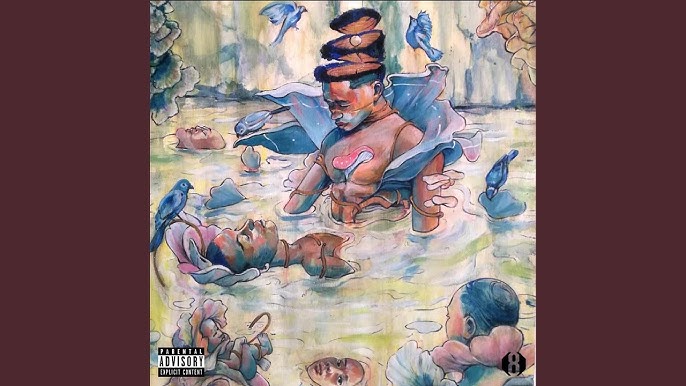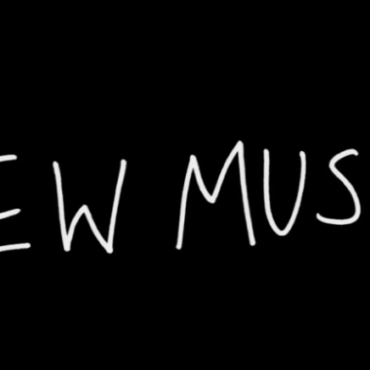On May 30, 2025, Kenyan rap heavyweight Octopizzo released June 25th, a searing protest anthem that turns raw memory into art, recounting the youth-led anti-finance bill protests of 2024 and the brutal government crackdown that followed. Known for his evolution from braggadocious street rapper to a master of layered, socially conscious production, Octopizzo uses this latest release to craft a sonic historical record. This article offers an in-depth exploration of how June 25th tells the story of Kenya’s bleeding youth through sound, sampling, and lyricism — turning a national trauma into both musical rebellion and cultural remembrance.
The roots of the 2024 protests lay in a boiling pot of public frustration: years of rising taxes, skyrocketing living costs, crippling youth unemployment, and a Finance Bill that many saw as the final betrayal by a political class that had campaigned on promises to uplift the poor but delivered little. When the Finance Bill reached Parliament, its provisions — from increased fuel levies to expanded digital taxes — struck a nerve, especially among the youth, informal workers, and small business owners already drowning under economic pressure. On June 25th, as MPs gathered inside Parliament to pass the bill, thousands of young protesters massed outside, chanting, waving placards, and demanding their voices be heard. That afternoon, history was made: protesters breached the gates and stormed the Parliament grounds — the first time in Kenya and the East African region that the public physically interrupted the legislative process. June 25th, Octopizzo’s track, captures this unprecedented moment by structuring its narrative around the chaotic buildup, the youthful hope, the violent state response, and the painful aftermath. Through layered news samples, driving beats, and carefully chosen lyrics, the song not only recounts the facts but emotionally plunges the listener into the heat of those fateful days, ensuring the protests and their consequences are not just remembered but felt.
The Kasongo Sample and Melody
At the heart of June 25th is the clever and symbolic refix of the 1977 Congolese hit Kasongo Mobali Na Ngai, originally composed by Alley Katelé and performed by Super Mazembe, a band that had made Nairobi its home after relocating from Zaire (now DRC). The original Kasongo is a soukous ballad sung in Lingala, where a wife pleads for her absent husband, Kasongo, to return — a theme born from a real-life visit to band member Kasongo wa Kanema’s home in Nairobi’s Eastleigh. In today’s Kenya, the song’s title has been humorously weaponized by the public as a nickname for President William Ruto, mocking his perceived political betrayals and repeated public flip-flops, especially after pushing through deeply unpopular tax hikes. On TikTok and Twitter, memes using Kasongo as a shorthand for abandonment and false promises have flourished — and Octopizzo taps directly into this cultural reinterpretation.
Technically, the track uses a looped, low-pitch chord sample from Kasongo to craft a dark, brooding atmosphere beneath the livelier, guitar-led East African melody, which symbolizes the fighting spirit the rapper wants to spark in his listeners. Two layers of guitar work dance here: one upbeat and nimble, evoking resilience and energy, and a second electric bass guitar layer that introduces a foreboding tension, mirroring the gravity of the protest themes. Heavy, low-pitched drums mark the track’s main rhythmic cycle, anchoring the mood, while lighter, faster trap-style 808s pop up under the verses, injecting urgency and vibrancy as Octopizzo delivers his lyrical punches. Together, the instrumentation and sampling don’t just decorate the song — they construct a sonic landscape where old cultural memories collide with new political realities.

The Sampling of News Clips and Narrative Progression
Octopizzo masterfully stitches June 25th together by layering real news clips across the track, transforming the song into an audio documentary that unfolds with chilling precision. The backbone of the song’s narrative progression is the sampled chorus of Kasongo, sped up to serve as the intro, interlude, and outro, under which the news clips roll chronologically. It opens with raw, emotional recordings of youthful protesters chanting, “Stop killing us, we are peaceful,” before shifting to reporters narrating the historic moment when protesters breached parliament on June 25th, as MPs inside tried to push through the deeply unpopular Finance Bill. Gunfire crackles both in the news clips and as a recurring sonic motif, anchoring the reality of violence — with reports noting at least five dead on that fateful day.
As Octopizzo delivers his first verse, the news clips pause, but the Kasongo loop and gunshot sounds continue, keeping the atmosphere tense. The interlude then shifts gears, queuing sharp, revealing clips of President Ruto himself: it begins with his angry national address on the night of June 25th, where he dismisses the protesters as organized criminals and terrorists, followed by later clips where he blames foreign funding for destabilizing the country and inciting the youth. This interlude crescendos with a haunting exchange between journalist Linus Kaikai and the president, where Kaikai presses him on whether he has blood on his hands — specifically invoking the case of a twelve-year-old boy in Rongai who was shot eight times. Ruto’s cold, infamous quip — “But that boy is alive, right?” — captured in the song, sparked national outrage, especially among Kenyans grieving that child’s death.
The outro layers two thematic strands: first, clips of young protesters directly addressing parliamentarians, warning of recalls if they keep betraying public trust; second, a heart-wrenching clip of Billy Mwangi’s mother pleading for her son’s return after his disappearance — one of several abductions targeting vocal government critics like Billy, who had gone viral for his anti-regime memes. By ending on this note, Octopizzo uses the news samples not just as background but as the song’s emotional spine, constructing a bleak, sorrowful narrative that speaks to the heavy costs of defiance under a repressive state.
Lyrics and Narrative Themes
Octopizzo’s June 25th reflects a marked stylistic shift from the witty, hard-hitting lyricism that first made him a Kenyan rap giant over two decades ago. Where early Octopizzo dazzled fans with sharp zingers and braggadocious wordplay aimed at rivals, his recent work has moved toward a more holistic sonic experience — focusing less on technical rap prowess and more on rich production layers that draw from East African musical histories. This shift was already evident in his critically acclaimed 2020 album Jungle Fever, which sampled precolonial Luo and Giriama instruments, and is even more prominent in his 2024 album Kich Ka Liech, which borrows from postcolonial rumba, benga, and zilizopendwa sounds of the 50s, 60s, and 70s.
The lyrics are less about intricate rhyme schemes or literary devices and more about creating a fluid melodic cadence that complements the production’s emotional weight. The first verse introduces Octopizzo’s playful, fashion-conscious persona, with lines like “Niko ‘richo nangojanga lighter / Onge ringo nakuja na diehards / Pizzo lethal nakuja na supply.” Here, ‘richo’ (a slang for Jericho, Nairobi) and the double entendre of diehards and supply play on both drug peddler slang and his relationship with loyal fans — a light, carefree tone that serves as narrative exposition. This framing mirrors the larger youth context: young Kenyans living carefree lives, only to be jolted into activism by the Finance Bill’s harsh realities. That shift hits when Octopizzo chants, “June 25th, June 25th, June 25th — alikuwa anaturn 25 June 25th,” culminating in the heavy declaration, “walituweka 6 feet deep on June 25th,” anchoring the song in the trauma of the protests’ deadly turn.
The verse further paints the frustrations of lower-class informal workers, the Mama Mboga and bodaboda riders left behind by a government that once promised to uplift them: “Mama Mboga analia anachoke / Bodaboda wanasema ukona joke.” Toward the verse’s close, Octopizzo weaves in political and cultural references, invoking Hanifa, a heroine of the movement, with the striking image “Rada ni dirty, Hanifa na pork”) and name-dropping Burkina Faso’s charismatic military leader Ibrahim Traoré and the late Kenyan Chief of Defence Forces, Francis Ogolla: “Ibrahim Traore, Ogolla bado uniform”.
In the second verse, Octopizzo turns fully to the protest crackdown’s horrors. He highlights the tragic killing of Rex Masai, shot by police despite protester claims of nonviolence: “Kina Rex kuwekewa lawama / Uchungu wa mwana kuzikwa na mama.” He then skewers the moral decay within the church, which faltered in the way it held the government accountable: “Makanisa kupewa bahasha.” Closing the verse, Octopizzo voices a gnawing anxiety about the next election cycle, wondering whether Kenyans will face a choice between submission or escape: “Koth biro 27 bana, hio vote tutaflee?”.
Written by Otieno Arudo





